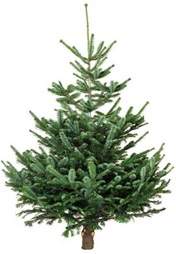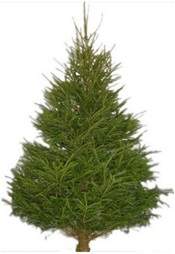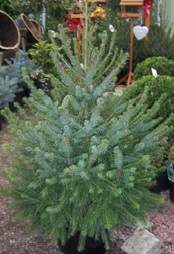Christmas tree size guide
Christmas tree sizes are often quoted both metric and imperial measures and ranges of sizes rather than exact heights. To cut through the confusion we've put together a handy little generalized comparison table for you, along with some key things to bear in mind and tips for finding the best tree for you and your home.
Christmas Tree Height
|
Feet and Inches |
Metres and Centimetres* |
What it means in practice |
|
2-3 Feet |
60-90cm |
Popular size for a child's bedroom |
|
3-4 Feet |
90-120cm |
Good for apartments/shared houses |
|
4-5 Feet |
120-150cm |
Homely size, easy to decorate |
|
5-6 Feet |
150-180cm |
Most popular size for home & office |
|
6-7 Feet |
180-210cm |
Maximum size for average 8ft ceiling |
|
7-8 Feet |
210-240cm |
Will require step ladders! |
* We use slight approximations to align to the way tree sizes are quoted in the industry
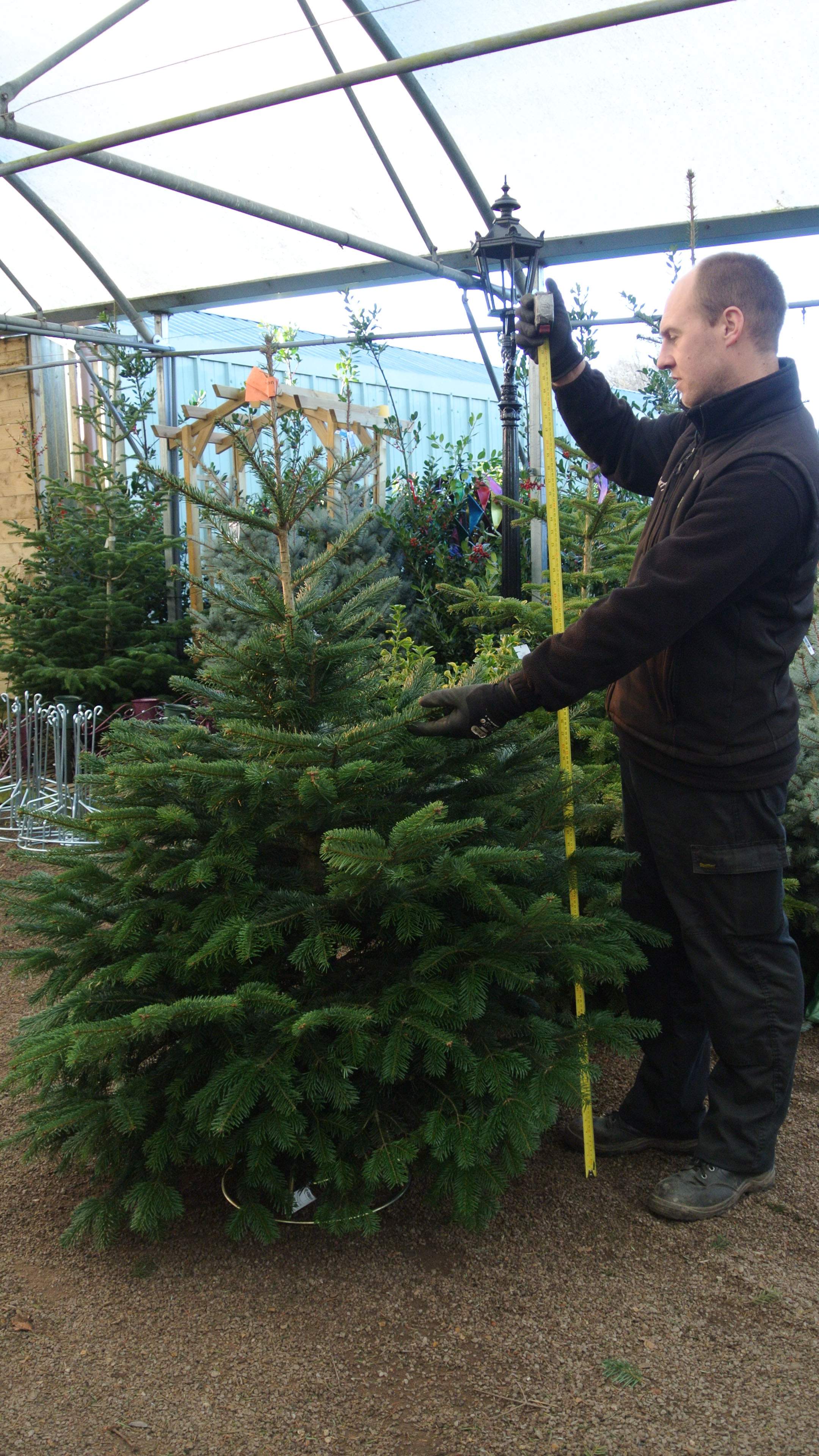
Christmas Tree Breadth
- Although it's industry-standard for Christmas trees to be measured by height only, width is equally important to consider in finding the right tree for your home. Is it going into a big hallway or along a narrow corridor?
- Typically the taller the tree, the bushier and wider it will be at the base. Taller and wider trees will be heavier and more difficult to manoeuvre into position too.
- There are differences by variety:
- Nordmann Fir trees have a wide base to accommodate lots of presents
- Norway Spruce trees have a wide base too that is more triangular in shape
- Serbian Spruces trees have a slender shape, ideal for smaller homes, porches or corridors
- Whilst Christmas tree branches are quite flexible in folding upwards, squashing one side of your tree too far into a wall or corner will result in your tree being unstable and liable to topple.
- If you're ordering your Christmas tree online and looking for a tree to fit into a particular space, feel free to include the dimensions in the notes to your order and we'll find a tree that best matches your requirements.
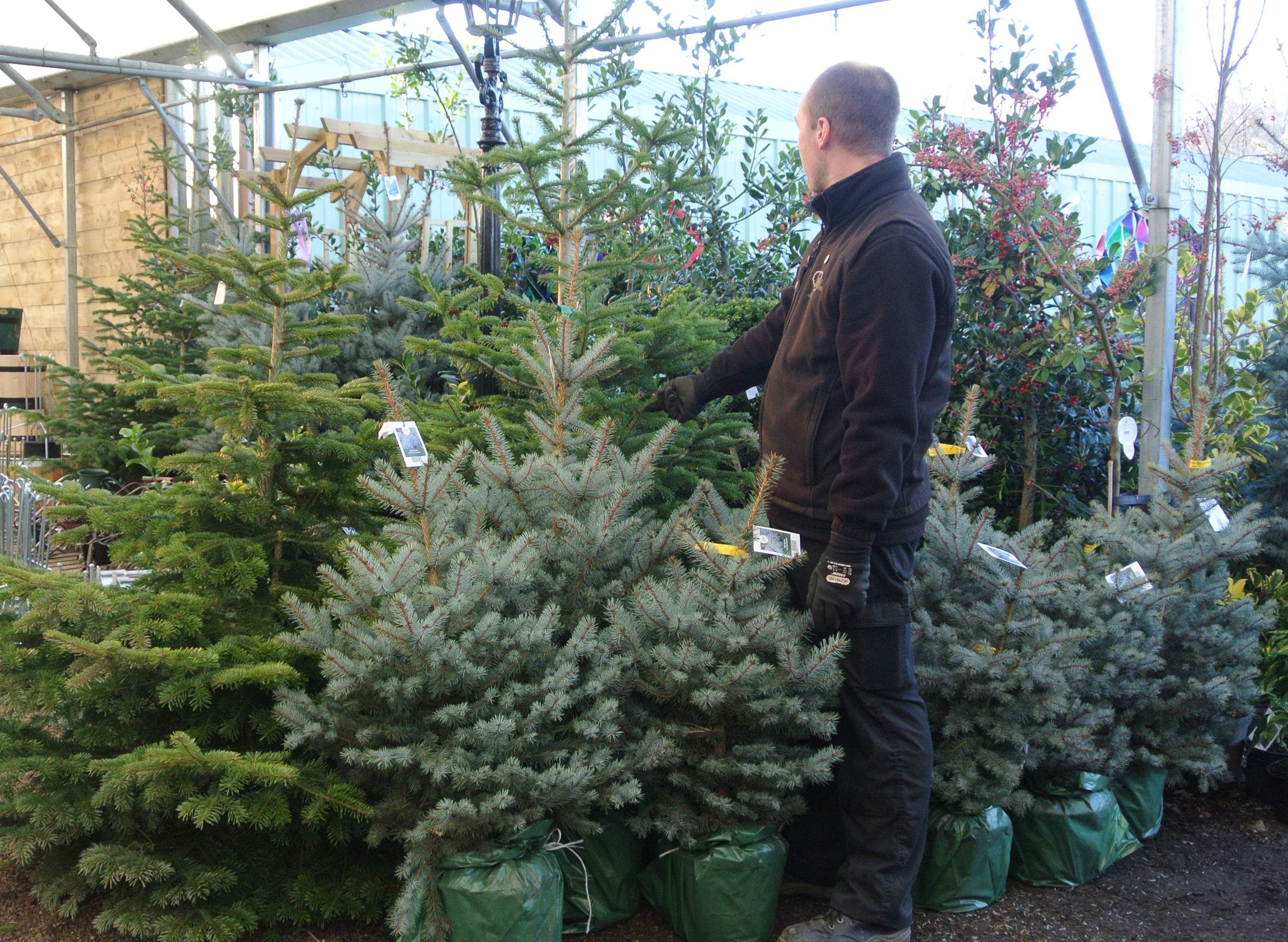
Things to keep in mind:
- The typical British ceiling is 8 ft with larger ceilings of (often older) houses going up to 9-10ft.
- Sizes are quoted from the base of the trunk to the top of the tree. If you're buying a potted or root balled tree the height also includes (from 2019) the height of the pot or rootball.
- Most Christmas tree stands will add around 6 inches (15cm) to the height of your tree. You'll also need to add whatever extra height is needed for your favourite angel, star or other ornament for the top of the tree.
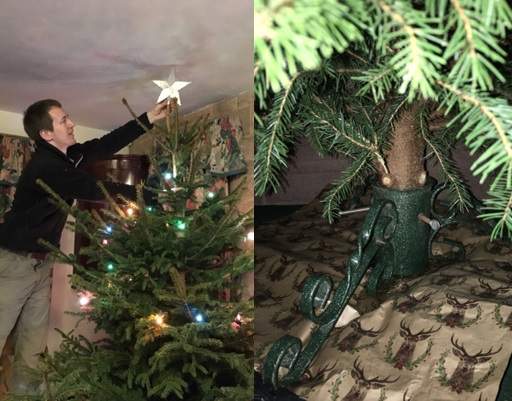
- Estimating a tree's size by eye is very difficult. We strongly recommend measuring up the location where you plan to put your Christmas tree, noting down dimensions and taking your tape measure with you to the garden centre.
- Avoid the temptation of choosing a tree that's taller than you really need as you'll just end up having to cut off part of the base and remove some of the lower branches, which may spoil the shape of your tree. A tree that's too wide or too tall will ultimately make your room look smaller.
- If you're determined to get a tall tree of 7ft+ you'll likely need a step-ladder to decorate it.
Why are Christmas trees advertised in size ranges?
- All plant heights are quoted in ranges because the natural factors driving their growth are too difficult to control to deliver trees of an exactly uniform range of sizes.
- It would be impractical to measure the exact height of every tree so growers and retailers categorise trees based on bands spaced 30cm/foot apart. This means people in the industry familiar with judging the height of trees can accurately judge where most trees fall within the bands by eye.
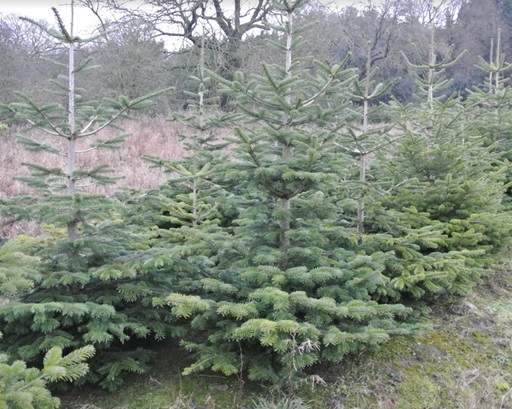
If I order a 4-5 Ft tree will it be 4 feet or 5 feet?
- We appreciate that having a more accurate handle on the size of your tree will help you find the best tree for your home and avoid a situation where the leader of your tree is bent sideways across the ceiling.
- Virtually all garden centres will have many trees within each size banding with each being of varying different heights within the quoted range, so even with the slight ambiguity in the way heights are quoted you can still find a tree exactly of the height you're looking for.
- If buying your tree in person at a garden we recommend taking your tape measure with you to check the exact height of different trees available within the size band you're interested in.
- If ordering online we're more than happy for you to specify the exact size of tree you're looking for in the notes to your order so you can find a tree that's just right for you.
Size guide in pictures
3-4 Ft (90-120cm) Nordmann Fir tree
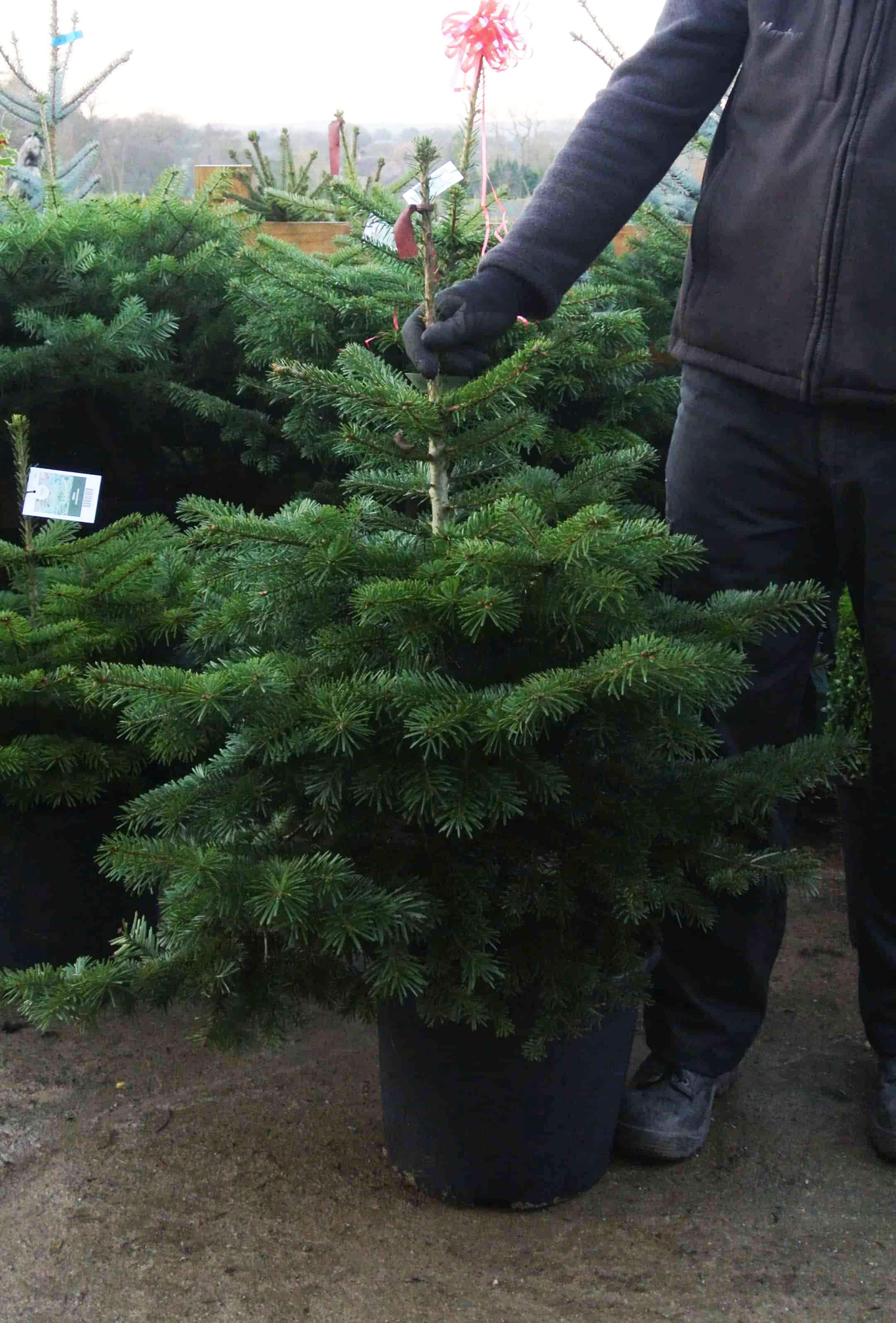
4-5 Ft (120-150cm) Nordmann Fir tree
.jpg?1575385600743)
5-6 Ft (150-180cm) Nordmann Fir tree
.jpg?1575385053494)
6-7 Ft (180-210cm) Nordmann Fir tree
.jpg?1575388765298)
7-8 Ft (210-240cm) Nordmann Fir tree
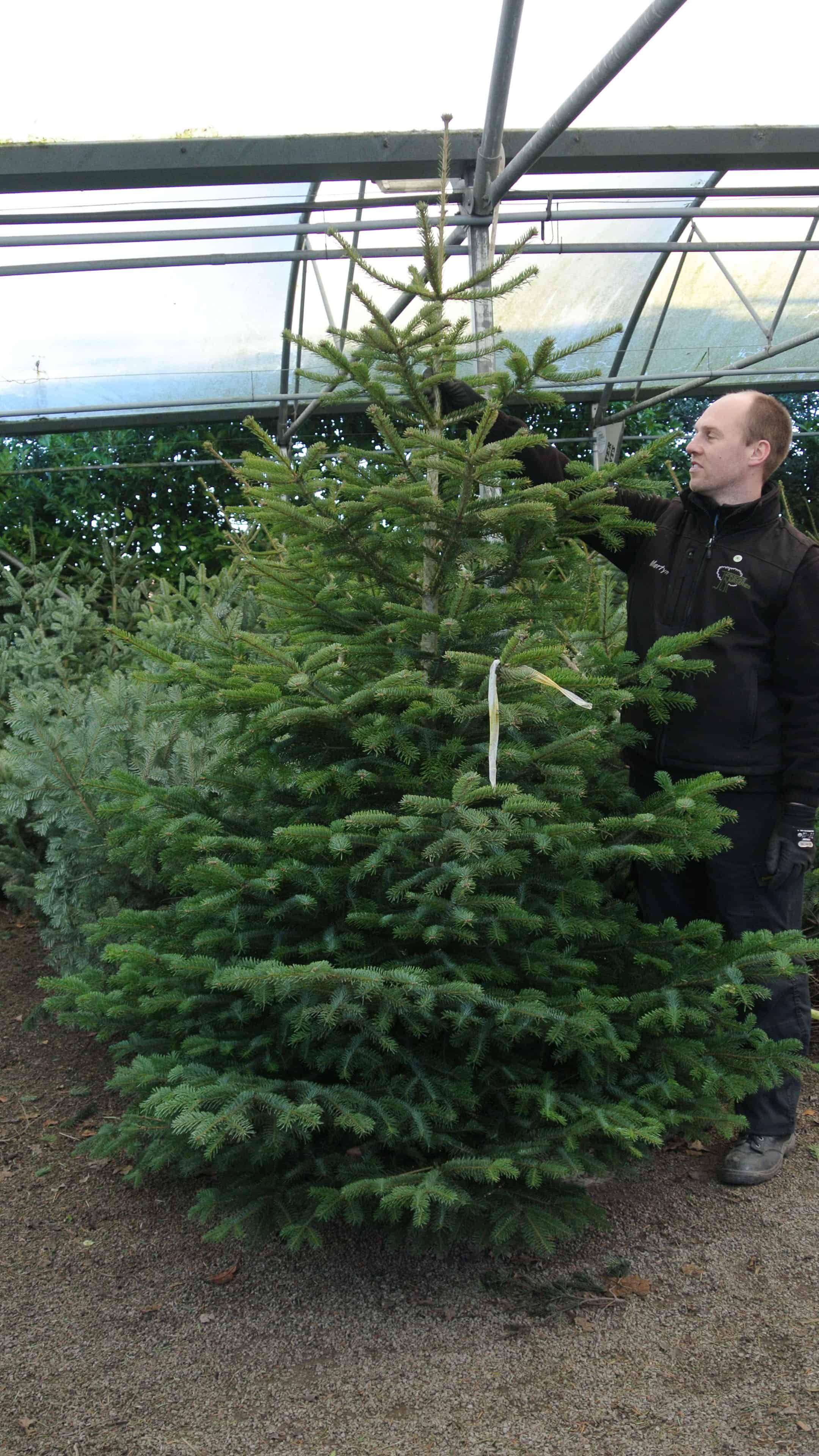
8-9 Ft (240-270cm) Nordmann Fir tree
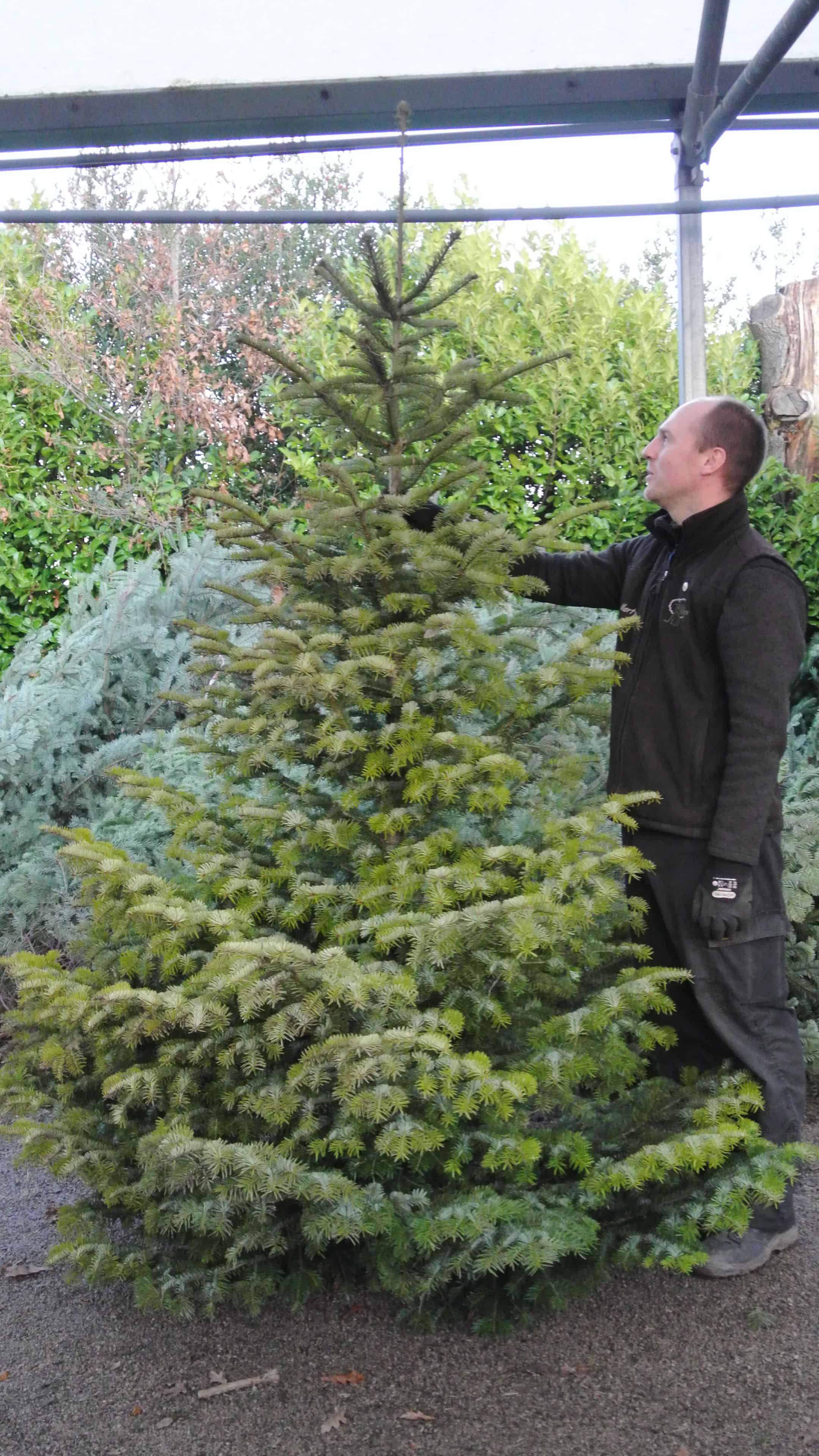
Contact Us for Advice
If you have any questions about the heights and sizes of our trees, or on any other topic, feel free to contact us at sales@jacksonsnurseries.co.uk or on 01782 502741 Monday to Friday 8am to 4:30pm. We'd be happy to help.
If you're find this Christmas tree size guide useful, feel free to share it with your friends using the social media buttons at the bottom of the page.
Share this page:


